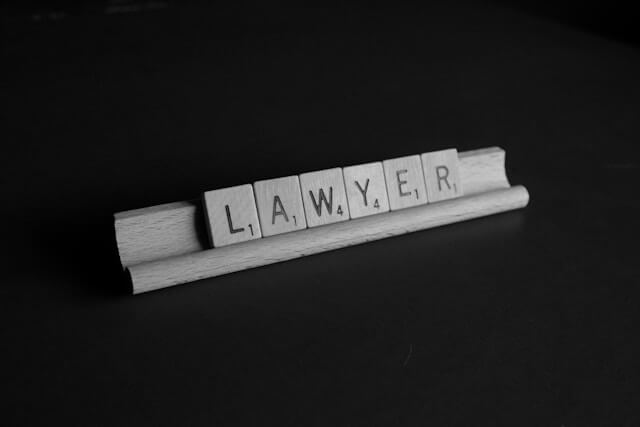When it comes to scientific research, the terms “hypothetical” and “theoretical” are often used interchangeably, but they actually have different meanings. Understanding the distinction between these two terms is crucial for researchers and students in fields like physics, chemistry, and biology. In this article, we’ll explore the difference between hypothetical and theoretical, and what they each mean in scientific research.
Difference Between Hypothetical and Theoretical
The main difference between hypothetical and theoretical is that a hypothesis is a proposed explanation for a phenomenon, while a theory is a well-established explanation that has been rigorously tested and supported by evidence.
A hypothesis is an educated guess that a researcher proposes to explain a particular phenomenon. For example, a researcher might propose that exposure to a certain chemical causes cancer. This hypothesis is not yet supported by evidence and needs to be tested through experiments or observations.
On the other hand, a theory is a well-established explanation that has been rigorously tested and supported by evidence. A theory can be thought of as the highest level of scientific understanding. For example, the theory of evolution is a well-established explanation for how species change over time, and it is supported by a vast amount of evidence from a variety of fields.
Hypothetical Meaning
The term “hypothetical” comes from the Greek word “hypothetikos,” which means “suppositional.” In scientific research, a hypothesis is a suppositional explanation for a phenomenon that needs to be tested through experiments or observations.
Hypotheses are important in scientific research because they provide a framework for testing and refining scientific explanations. Without hypotheses, researchers would have no direction in their investigations, and scientific progress would be difficult, if not impossible.
Examples of Hypothetical and Theoretical:
To further illustrate the difference between hypothetical and theoretical, let’s consider some examples:
Example 1: A researcher proposes that a certain medication can reduce the symptoms of depression. This is a hypothesis that needs to be tested through clinical trials and other experiments.
Example 2: The theory of relativity is a well-established explanation for how gravity works. It has been rigorously tested and supported by evidence from a variety of fields, including physics and astronomy.
Expert Opinions and Facts:
According to Dr. Amanda Randles, an assistant professor of biomedical engineering at Duke University, “Hypotheses are the foundation of scientific research. They provide a starting point for investigation and allow researchers to refine their understanding of complex phenomena.”
Dr. Randles goes on to explain that “theories, on the other hand, are the culmination of scientific investigation. They represent the highest level of scientific understanding and are supported by a vast amount of evidence from a variety of fields.”
Studies have shown that the scientific process, which involves the development and testing of hypotheses and the refinement of theories, is an effective way of understanding the natural world. In fact, the scientific method has led to some of the most significant discoveries and innovations in human history.
Theoretical Meaning: Understanding the Significance in Scientific Research
In scientific research, the term “theoretical” is often used to refer to ideas and concepts that are based on a body of knowledge and have not yet been tested through experiments or observations. In this article, we’ll explore the meaning of theoretical and its significance in scientific research.
Theoretical Meaning
The term “theoretical” comes from the Greek word “theoros,” which means “speculative.” In scientific research, theoretical ideas and concepts are speculative in the sense that they have not yet been fully tested through experiments or observations.
Theoretical ideas and concepts are important in scientific research because they provide a framework for understanding the natural world. They can also inspire new research questions and hypotheses, and guide the development of new technologies and innovations.
Examples of Theoretical
To further illustrate the meaning of theoretical, let’s consider some examples:
Example 1: The theory of relativity is a well-established explanation for how gravity works. It is based on a body of knowledge and has been rigorously tested and supported by evidence from a variety of fields, including physics and astronomy.
Example 2: String theory is a theoretical framework that attempts to unify the laws of physics. It is based on a body of knowledge and has inspired new research questions and hypotheses, but it has not yet been fully tested through experiments or observations.
“Hypothetically speaking” vs “Theoretically speaking”:
The terms “hypothetically speaking” and “theoretically speaking” are often used interchangeably, but they have slightly different meanings.
“Hypothetically speaking” is used to refer to a situation or scenario that is imagined or assumed to be true, but has not yet been proven or tested. For example, “hypothetically speaking, if we could travel faster than the speed of light, what would happen?”
“Theoretically speaking” is used to refer to a situation or scenario that is based on a theoretical framework or body of knowledge, but has not yet been fully tested through experiments or observations. For example, “theoretically speaking, string theory predicts the existence of multiple dimensions.”
Hypothetical vs Theoretical Situation
A hypothetical situation is a scenario that is imagined or assumed to be true, but has not yet been proven or tested. For example, a researcher might propose a hypothetical scenario in which a certain medication is effective in treating a particular disease.
A theoretical situation, on the other hand, is a scenario that is based on a theoretical framework or body of knowledge, but has not yet been fully tested through experiments or observations. For example, a researcher might propose a theoretical scenario in which the laws of physics operate differently in other parts of the universe.
Hypothetical vs Theoretical FAQ: Understanding the Key Differences
Hypothetical and theoretical are two terms that are often used interchangeably, but they have distinct meanings. In this article, we’ll explore some frequently asked questions about the differences between these two terms and what it means to speak hypothetically.
What is the difference between theoretical and hypothetical?
Theoretical and hypothetical are both terms used to describe ideas or concepts that have not yet been fully tested or proven. However, the key difference between these terms is the basis on which they are formulated.
Theoretical ideas are based on a body of knowledge and are used to explain or predict phenomena that have been observed or measured. These ideas are supported by evidence and have been rigorously tested through experiments or observations.
Hypothetical ideas, on the other hand, are ideas that are assumed to be true for the sake of argument, but have not yet been proven or tested. Hypothetical ideas can be used to explore possibilities, make predictions, or generate hypotheses.
What does it mean to speak hypothetically?
To speak hypothetically means to discuss a situation or scenario that is imagined or assumed to be true, but has not yet been proven or tested. Hypothetical statements are often used to explore possibilities, make predictions, or generate hypotheses.
For example, if someone says, “hypothetically speaking, if I won the lottery, I would buy a house,” they are discussing a situation that is assumed to be true for the sake of argument, but has not actually happened.
Another example of speaking hypothetically might be, “if we were to develop a new technology that could reduce carbon emissions by 50%, what impact would that have on the environment?” This statement is discussing a scenario that is imagined, but has not yet been proven or tested.
Are hypothetical ideas useful in scientific research?
Yes, hypothetical ideas can be very useful in scientific research. They can be used to explore possibilities, make predictions, or generate hypotheses that can be tested through experiments or observations.
For example, a scientist might propose a hypothetical idea about how a certain drug might interact with a particular protein in the body. This idea could then be tested through experiments to determine if it is accurate.
However, it’s important to note that while hypothetical ideas can be useful, they are not the same as proven or tested ideas. Scientists must conduct experiments and gather evidence to determine whether a hypothetical idea is accurate or not.
What are some examples of theoretical and hypothetical ideas?
Some examples of theoretical ideas include the theory of evolution, the theory of relativity, and quantum mechanics. These ideas are based on a body of knowledge and have been rigorously tested through experiments or observations.
Some examples of hypothetical ideas might include the existence of parallel universes, the possibility of time travel, or the potential benefits of a new technology that has not yet been developed. These ideas are imagined or assumed to be true, but have not yet been proven or tested.
What’s a Hypothetical Example? Exploring the Concept
Hypothetical examples are used to illustrate or explore ideas or concepts that have not yet been fully tested or proven. They are often used to explore possibilities, make predictions, or generate hypotheses. In this article, we’ll explore the concept of hypothetical examples and provide some examples of their use.
What’s a hypothetical example?
A hypothetical example is a scenario or situation that is assumed to be true for the sake of argument, but has not yet been proven or tested. Hypothetical examples can be used to explore possibilities, make predictions, or generate hypotheses.
For example, if someone says, “hypothetically speaking, if I were to lose my job tomorrow, I would have to start looking for a new one,” they are discussing a situation that is assumed to be true for the sake of argument, but has not actually happened.
Another example of a hypothetical situation might be, “if the government were to increase taxes on cigarettes, what impact would that have on smoking rates?” This statement is discussing a scenario that is imagined, but has not yet been proven or tested.
What are some other words for theoretical?
There are several other words that can be used to describe theoretical ideas or concepts. Some of these words include:
- Abstract: This word is often used to describe ideas or concepts that are theoretical or conceptual in nature, rather than concrete or tangible.
- Hypothetical: As we’ve discussed, this word is often used to describe ideas or situations that are imagined or assumed to be true, but have not yet been proven or tested.
- Speculative: This word is often used to describe ideas or concepts that are based on conjecture or guesswork, rather than evidence or facts.
- Hypothetic: This is another term that is often used interchangeably with hypothetical, to describe ideas or situations that are assumed to be true for the sake of argument.











